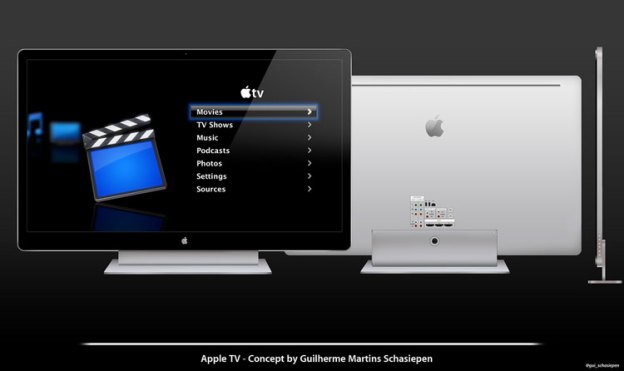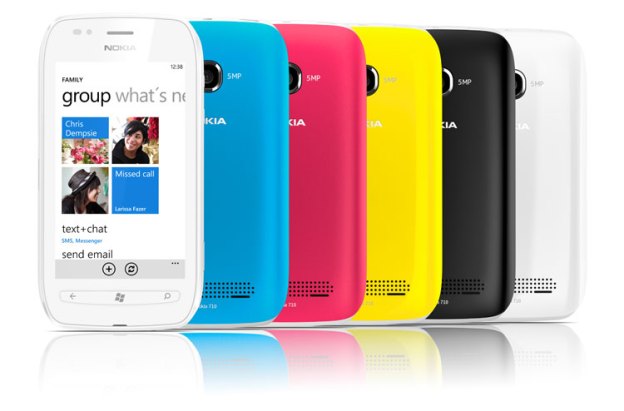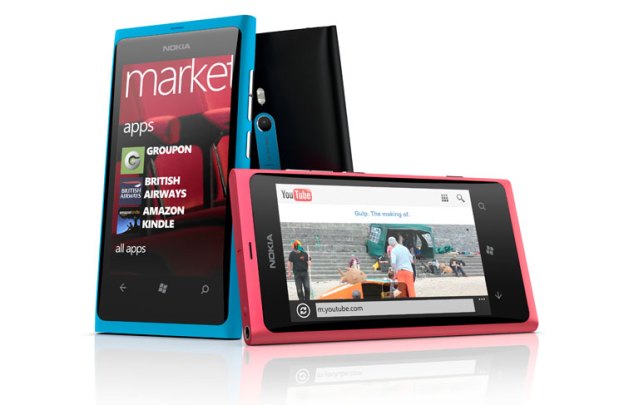
While Apple is clearly at the top of its game and Nokia is at other end of the spectrum, struggling to be relevant again, both have very similar problems if Apple iTV rumors turn out to be true. Both have to enter an already saturated market (TVs for Apple, smartphones for Nokia) and carve out a big enough share to justify the efforts of a global company.
For Nokia, this is about survival. For Apple it will demonstrate whether the post-Steve-Jobs Apple can still justify its status at the top of heap. Failures at either company could cost the CEO at either company his job, and result in layoffs or dramatic changes in how the firms are valued. While Apple would clearly survive a failure and Nokia wouldn’t, the folks at the top of both companies have their butts on the line. At Nokia, that exposure likely cuts over to Microsoft and Steve Ballmer, too.
In short, success or failure may well define the future of both firms. A successful Apple TV could be the next iPod, forming the basis for yet another Apple transition and tying the devices together into a media wonderland. A successful Windows Phone 7 line could make the difference between whether the Finnish company recovers or dies.
Let’s explore this.
Going after an entrenched market
Whether we are talking about TVs or smartphones, we are generally talking about markets that are awash with product, where people have already made critical choices and adopted platforms. For TVs, that ecosystem is a customer’s cable or satellite company. For smartphones, the market is generally divided between Apple and Google, with customers who have invested in their respective platforms and now will be a pain to move.

Two methods: Flanking or the head-on assault
With an entrenched enemy, you can either try to hit them head on, or try to find a way around them and hit them where they are weakest. Apple’s successes were all flanking moves. The company’s one head-on attack (Mac against Windows) stalled, even though Apple outspent most PC OEMs significantly. A similar fight is still playing out: You can watch Microsoft spend billions in what is largely a head-on attack on Google, also resulting in relatively small and unprofitable share gains.
A head-on attack is basically coming to market with a similar product to what is already out there. The rule of thumb: You have to outspend the combined resources (including partners) of the entrenched vendor by a magnitude (10x), or get the entrenched vendor to do something really stupid. Windows Vista was a good example of the latter, and Apple did gain share for a while on that mistake.
With the iPod, iPhone, and iPad, Apple hit Microsoft where it was weak. MP3 players weren’t selling because they were difficult to use, so Apple redefined the market around a hard-drive player and vastly better music services. The smartphone market was defined by business offerings and IT buyers, so Apple hit it with a consumer-focused product, because cell phones have always done better when targeted at users (they didn’t even try to spell IT). Tablets suffered from a number of problems, like poor battery life and portability, so Apple focused like a laser on solving them with the iPad.
In all three cases, Apple offered end-to-end support and usability, coupled with a tight focus on users as opposed to any other group (content owners or business buyers). When weighed against a head-on attack, this approach was actually inexpensive for Apple to win.
Selling Apple iTV and Nokia’s Mango phones
TVs are already focused on users, but no connected TV has done the end-to-end thing particularly well. Sony made the last major attempt with Google TV, and it ended, as Google efforts increasingly do, badly. Netflix has a good thing going, but it nearly committed corporate suicide, providing an opening. On phones, both Apple and Google already focus on users, so Nokia can’t easily take a page from Apple’s book, but both companies still have shortcomings (though Google by far is the easier target).

To be successful, first these firms have to get people to think what they currently have is inadequate. Folks have generally already bought smartphones and invested time in learning how to use them, so won’t consider Windows Phone 7 unless Nokia can establish the flaws in iOS and Android. Google’s problems with reliability, security, and tendency to bring out unfinished products leave the door open for Nokia here. Apple has more experience (Mac vs. PC campaign) doing disparaging campaigns, but folks don’t replace TVs as often (every eight years, compared to every two years for smartphones). On the up side, there is no loyalty to any TV vendor I can find.

The iPhone in particular is a crazy good product, and TVs are both cheap very reliable. This suggests that both firms will need compelling, unique content to pull buyers to their platforms in terms of apps or entertainment products. For Apple, there is an easy path through its alignment with Disney. After all, it was Disney’s Wonderful World of Color that drove color TVs into the market after nearly 20 years of failure. However, Apple and Disney haven’t done that much together while Steve Jobs was alive (one largely failed deployment of Macs at Disney was all I tracked) so this is far from certain. And a Hulu-like offering priced at $1 per show is likely to be less than compelling.
High-stakes gambles
I have my doubts that either company will step up to the level needed to penetrate an entrenched market, be it smartphones or PCs. It can be done — Apple has shown that time after time — but this time the company will have to do it without master magician Steve Jobs to help. Nokia has new and relatively untested leadership, but that doesn’t lead to the conclusion of a sure thing, either. The degree of difficulty in both cases is through the roof. While Apple can afford not to go after TVs at all, Nokia doesn’t have that choice. But neither can afford failure. Win or lose, these attempts to pry open entrenched markets will likely define both firms’ futures.
Guest contributor Rob Enderle is the founder and principal analyst for the Enderle Group, and one of the most frequently quoted tech pundits in the world. Opinion pieces denote the opinions of the author, and do not necessarily represent the views of Digital Trends.
Editors' Recommendations
- Everything you need to know about the massive Apple App Store outage
- How to get a D-pad on your Apple TV Remote app
- Apple has almost 50% of the global refurbished smartphone market
- Google Pixel 7 vs. Apple iPhone 14
- Google Pixel 7 Pro vs. Apple iPhone 14 Pro: Which pro phone is best?


